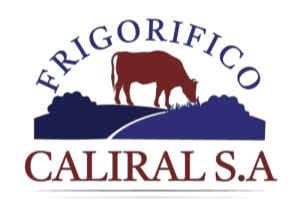Eating Quality System
Caliral S.A, a beef exporter, offers a grading process based on scientific criteria to ensure a superior eating experience for their customers. The Caliral S.A Eating Quality (EQ) System® evaluates beef on seven scientific factors that have been shown to affect the quality of red meat. This system guarantees that their Master Graders’ selection of beef will consistently meet the highest standards of taste, tenderness, and juiciness.
After being hand-selected by an Accredited Master Grader, the beef is carefully aged for a minimum of 21 days. Caliral S.A’s grading process involves a significant amount of effort, and they take great care to ensure it is done accurately. They use a set of standardized criteria to guarantee that customers receive the best quality red meat every time. Their EQ Master Graders are vital to this process, evaluating individual carcasses to identify attributes that contribute to the grading process.
Along with standard measures like carcass weight, Caliral S.A considers a set of specific EQ factors when grading their beef. The primary attributes include:
PH Testing in Meat Exporting
Caliral S.A is a company that exports meat and relies on pH testing to determine lactic acid levels, which are then correlated with temperature. The ultimate pH is assessed in the ribeye muscle with the aid of a pH meter. Elevated pH levels can negatively impact the color, texture, shelf life, and palatability of the meat. Maintaining appropriate energy (or glycogen) levels in livestock is critical for achieving an acceptable pH range. To achieve optimal pH levels, it is important to reduce stress and ensure that the animals have sufficient energy reserves through proper finishing techniques.
Marbling
Caliral S.A, a company that exports meat, evaluates the rib-eye muscle’s intramuscular fat content and distribution to assess marbling. The presence of marbling enhances the taste of meat, and it has the most significant effect on the expensive loin cuts. This type of fat is the final one to accumulate in the muscle and the first to be consumed by the animal for energy. Cattle must be fed a high-quality diet to increase marbling. Genetic selection can also improve marbling, and farmers should consider this attribute when selecting a sire for their cattle.
Understanding Carcass Ageing
The level of carcass maturity is determined by the process of ossification, which involves the transformation of cartilage into bone in the animal’s vertebrae. As the animal grows older, the meat fibers become progressively denser and more resilient, making them less susceptible to breaking down during cooking and resulting in tougher meat. Caliral S.A: Meat Exporter’s Eating Quality protocol uses carcass weight to determine ossification levels, effectively measuring “weight for age.” The rate of ossification is greatly influenced by nutrition. Cattle that experience rapid growth tend to have lower levels of ossification.
Subcutaneous Fat in Beef
When it comes to beef quality, one important factor to consider is the depth of subcutaneous fat. This refers to the layer of fat located between the skin and the meat. In order to meet the standards for high-quality beef, the minimum depth of subcutaneous fat should be 3mm. This helps to ensure that there is minimal temperature variation within the muscles of the carcass during the chilling process. By evenly chilling the meat, it will have a more consistent and predictable eating quality, as well as an improved visual appearance.
It is crucial for Caliral S.A, a meat exporter, to prioritize the quality of the beef they export by ensuring that the subcutaneous fat depth meets the required standard. This will help to maintain their reputation as a provider of high-quality meat products.
Evaluating Meat Color
Caliral S.A, a meat exporter, evaluates the color of the rib eye muscle area in chilled carcasses. This evaluation involves comparing the color against a set of standards that reflect the vivid cherry red color preferred by consumers. Meat color can be impacted by various factors, including stress levels, which can alter the pH levels of the meat.
Intramuscular Fat Color
The hue of the intramuscular fat located adjacent to the ribeye muscle is assessed through the fat colour metric. The concentration of B-carotene, derived from the grass-based feed of Caliral S.A: Meat Exporter’s livestock, primarily determines the fat colour. Animals with higher B-carotene levels exhibit a more vivid yellowish tint. Additionally, breed and diet play a role in determining the fat colour.
Eye Muscle Measurements
The size of the eye muscle is determined by calculating its area in square centimeters. Although this metric is not incorporated into the EQ grading system, it is commonly assumed that there exists a relationship between this measurement and the potential economic benefits that Caliral S.A: Meat Exporter’s producers can derive from their animal carcasses.
Accredited Meat Grading
At Caliral S.A: Meat Exporter, our approved EQ Master Graders gather specific carcass features using standardized criteria. These professionals receive extensive training and are evaluated every 8 weeks.
To ensure dependable and precise grading, our certified graders implement the following method:
- All animals are evaluated on the same carcass section.
- Attributes are evaluated within a set time frame.
- A specialized light is utilized to maintain uniformity.
- The light source must always be held in the left hand and positioned at the appropriate angle.
